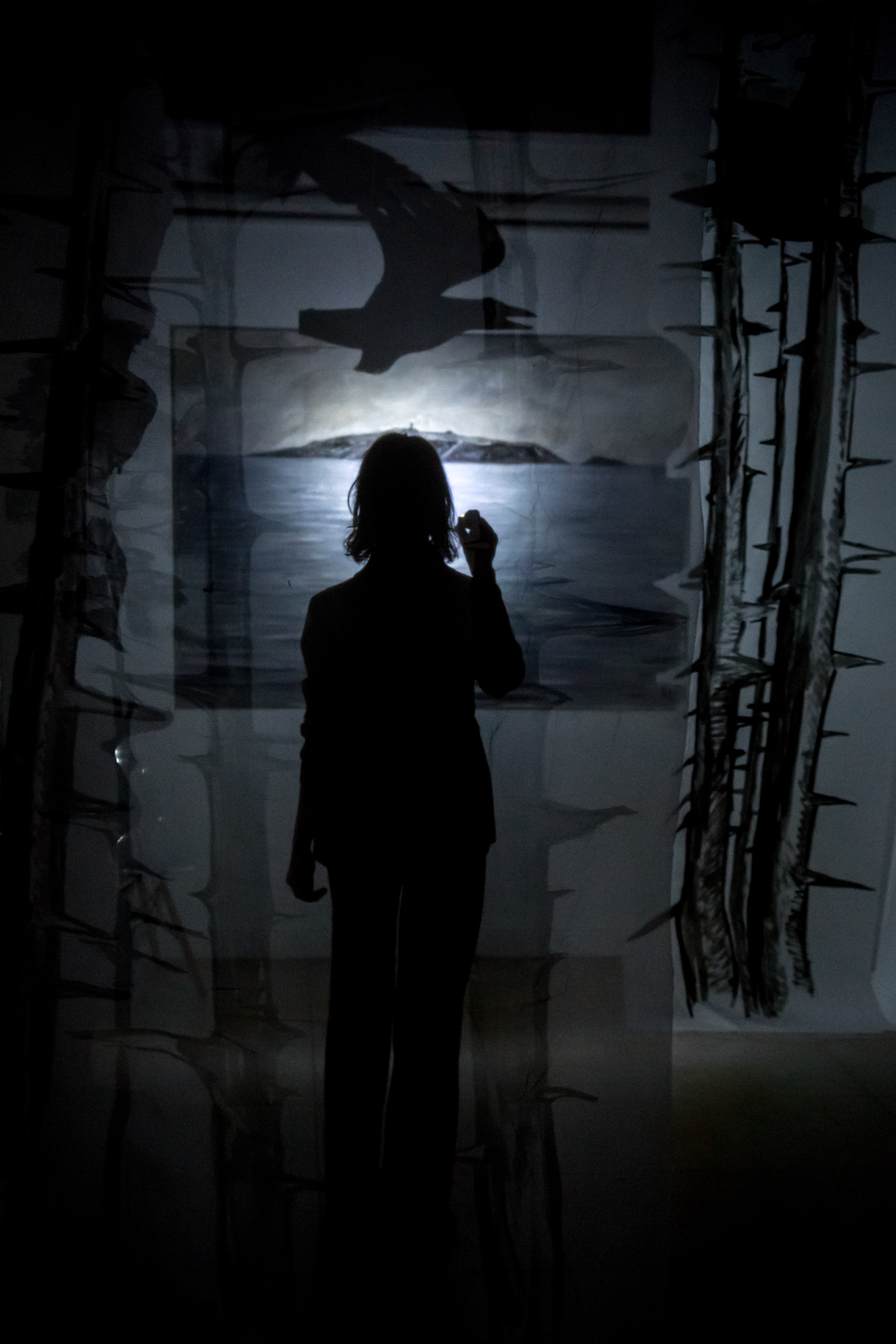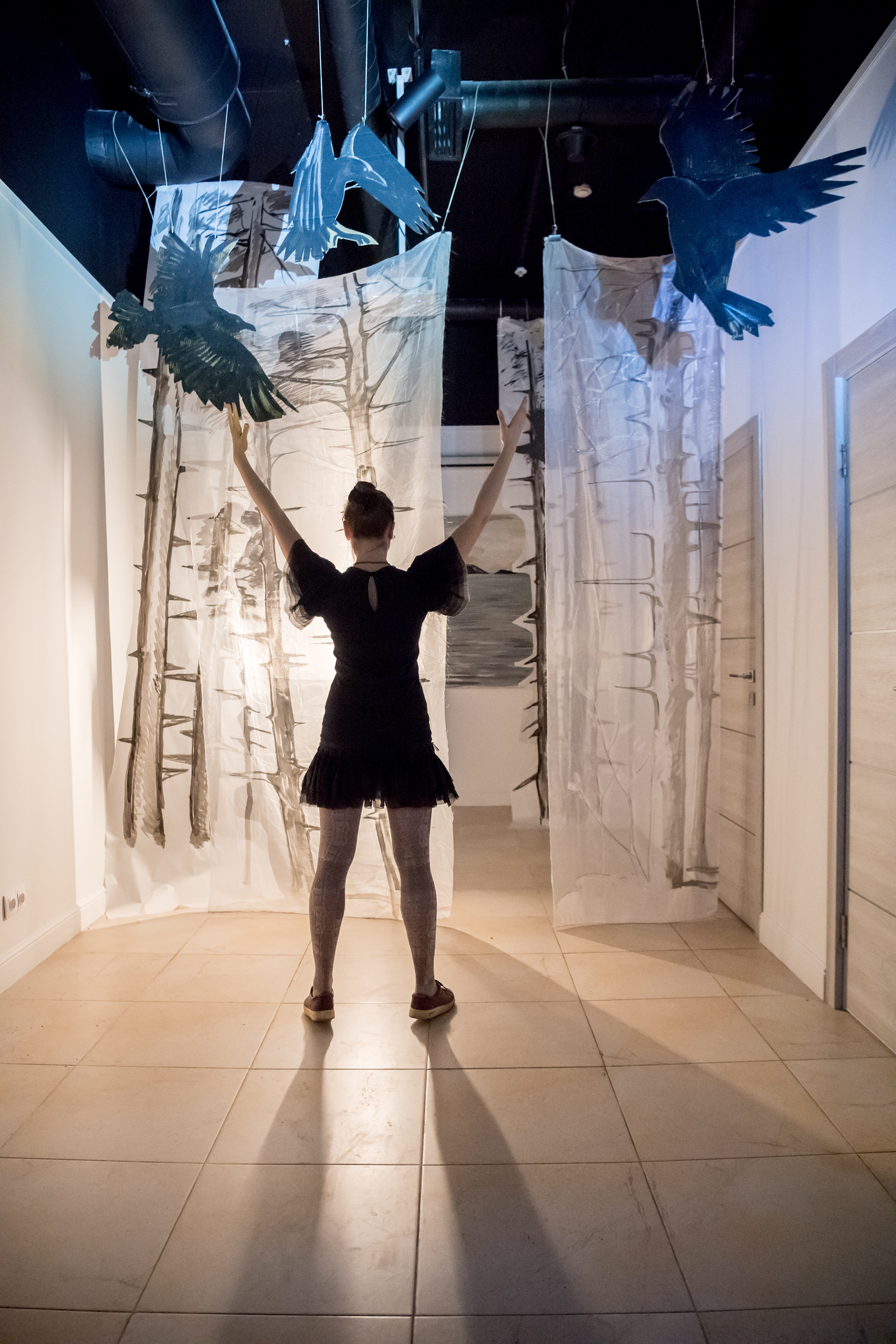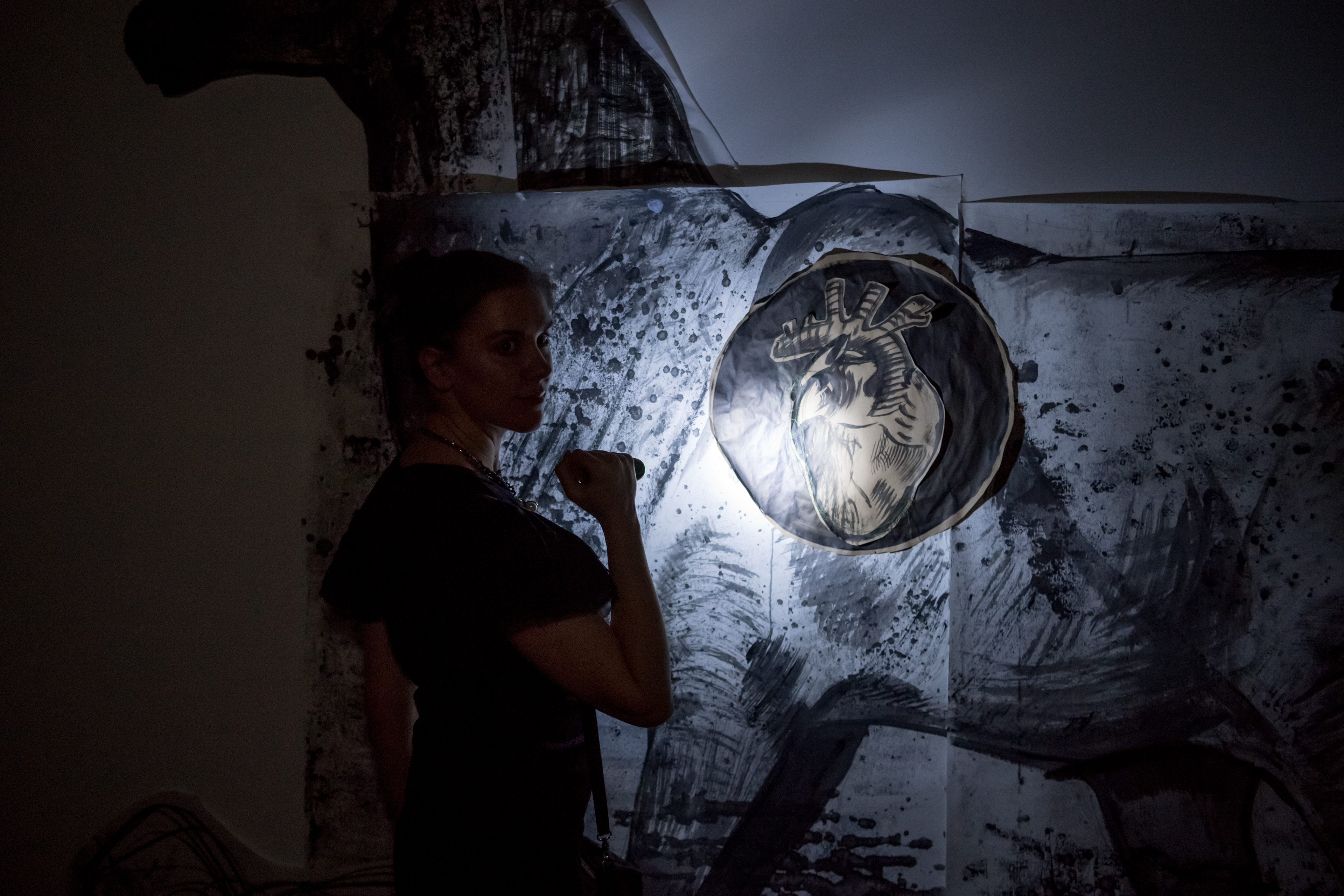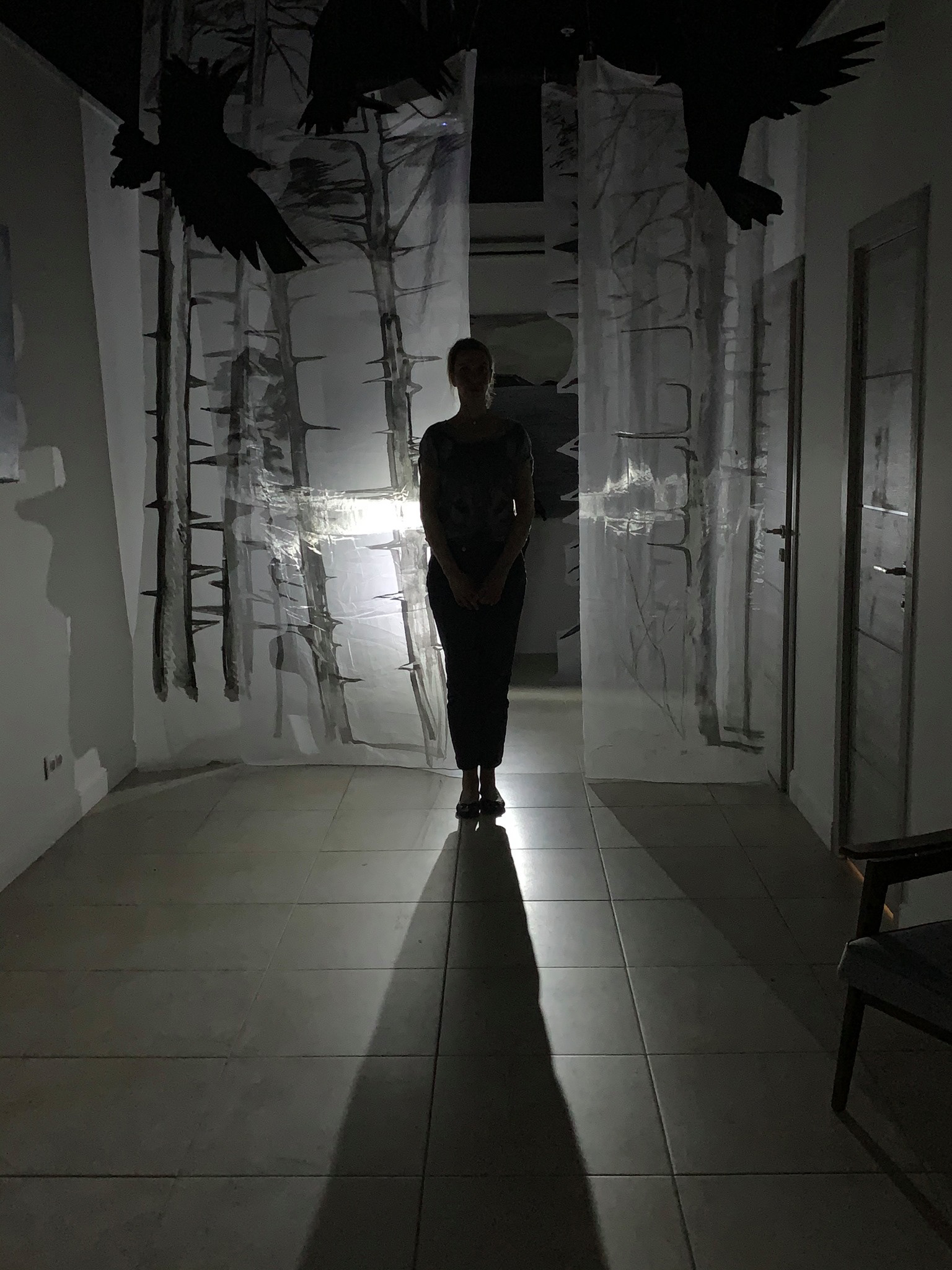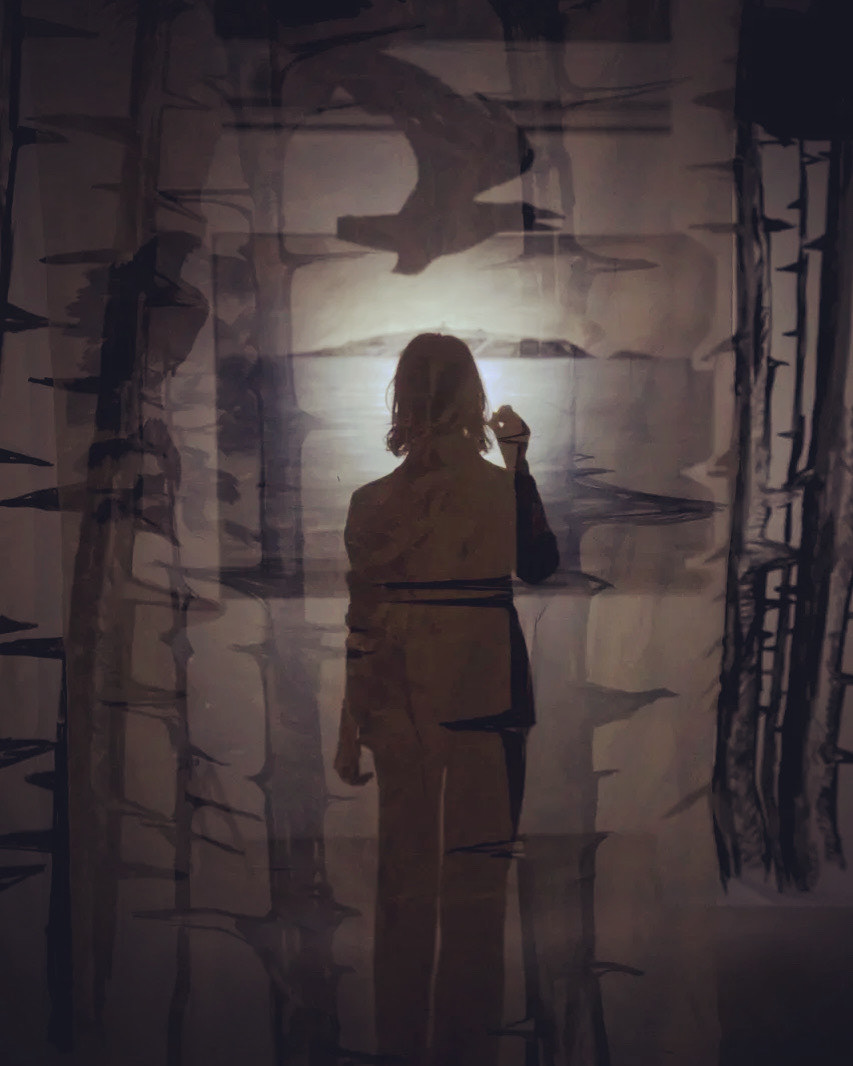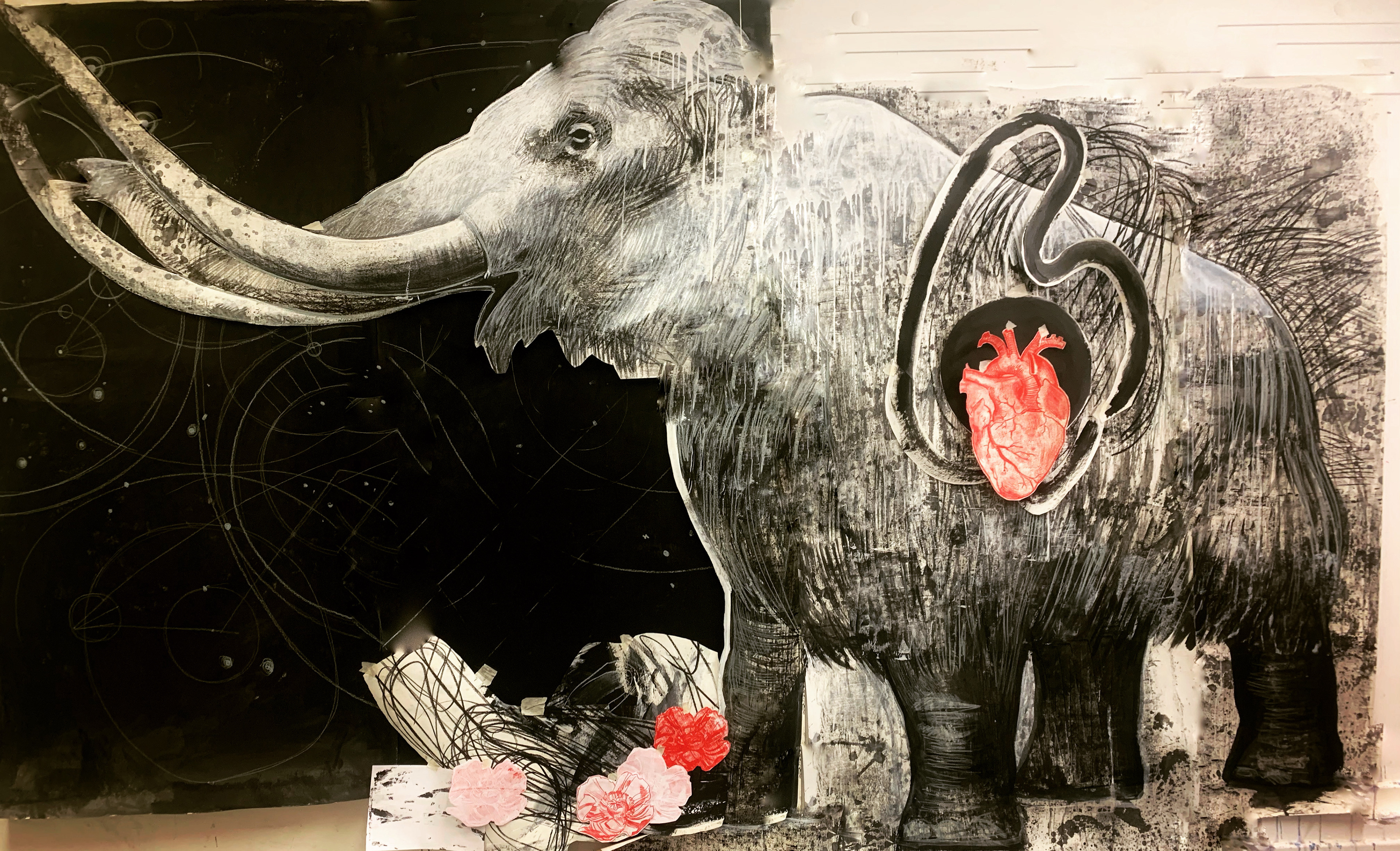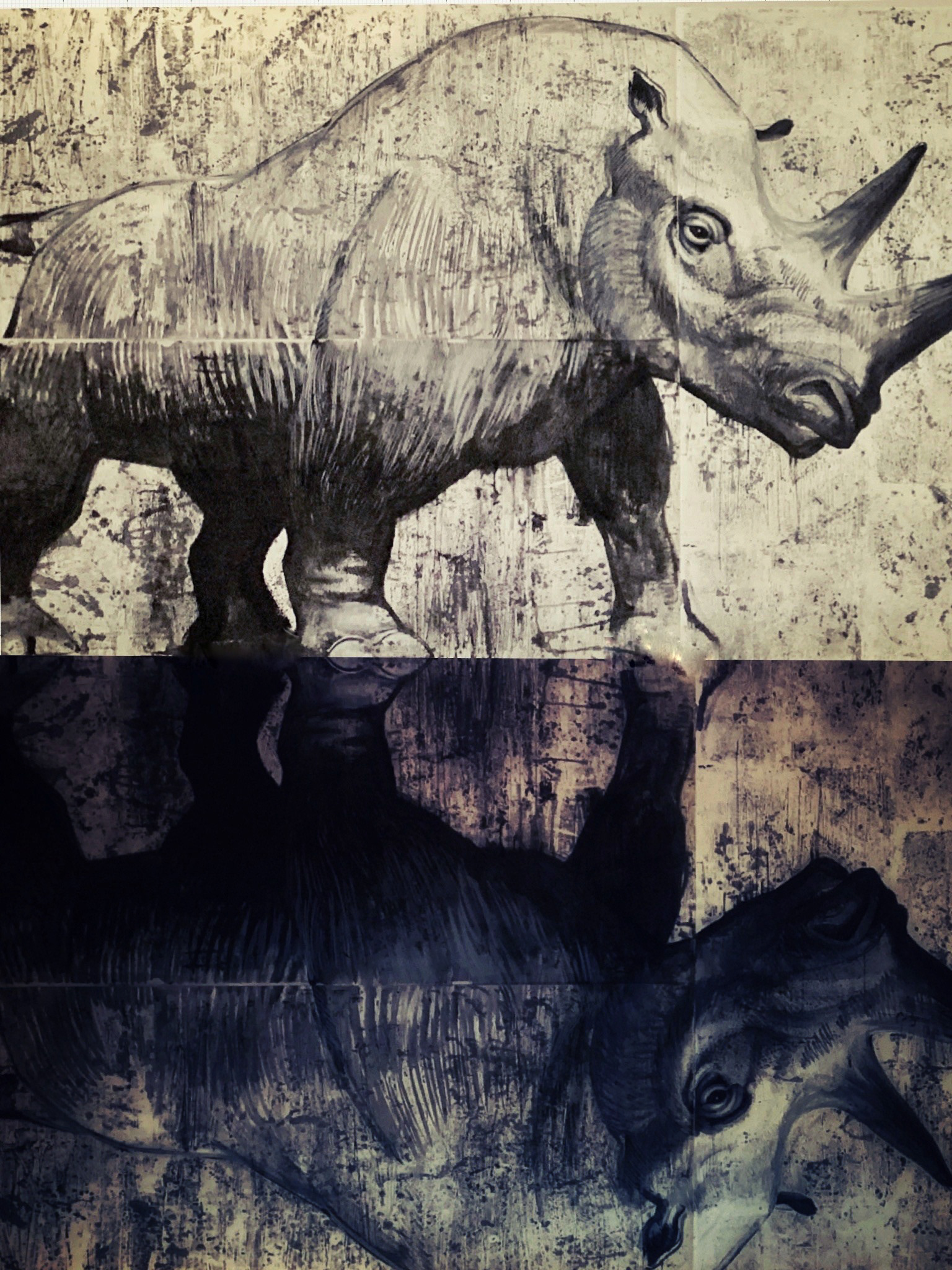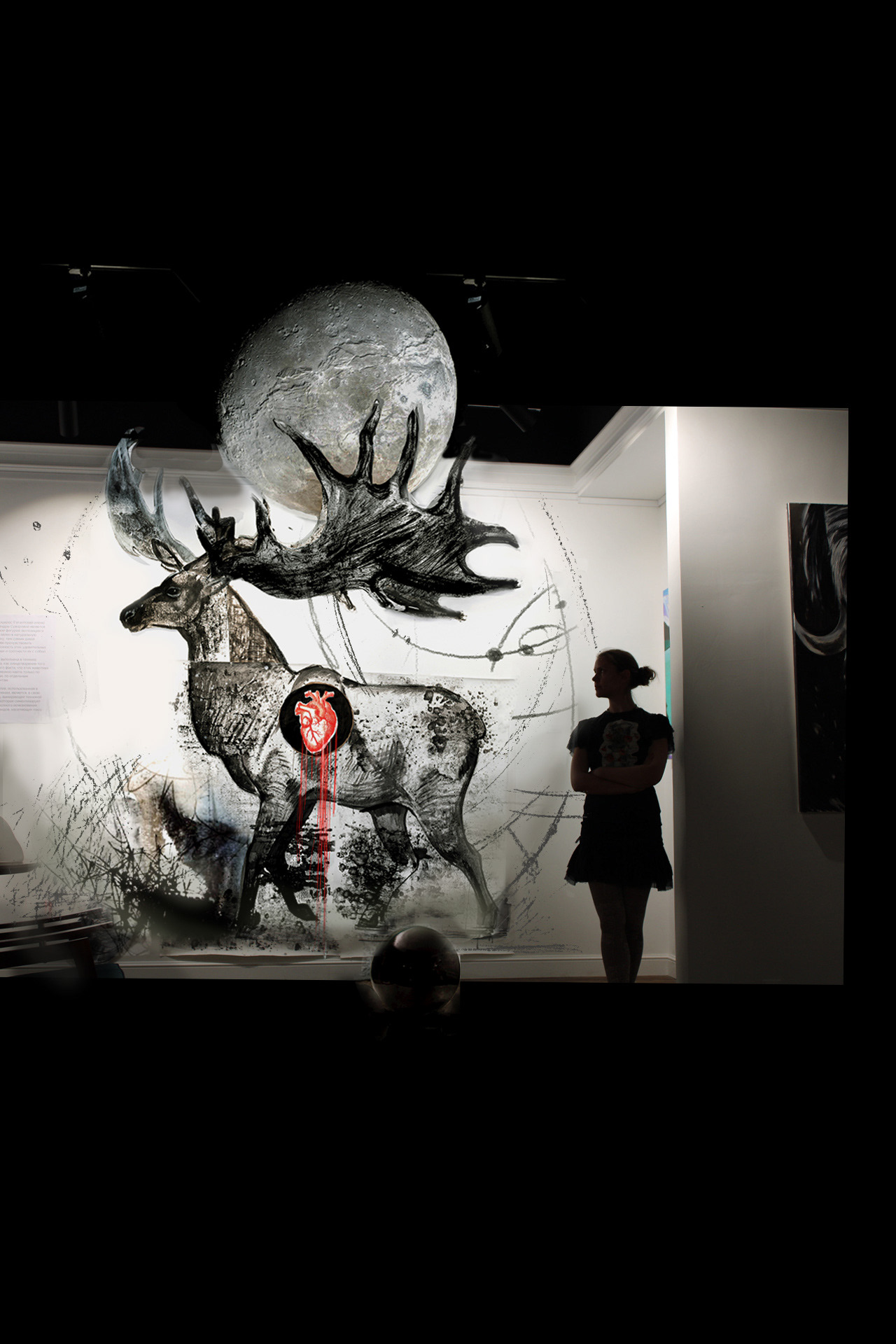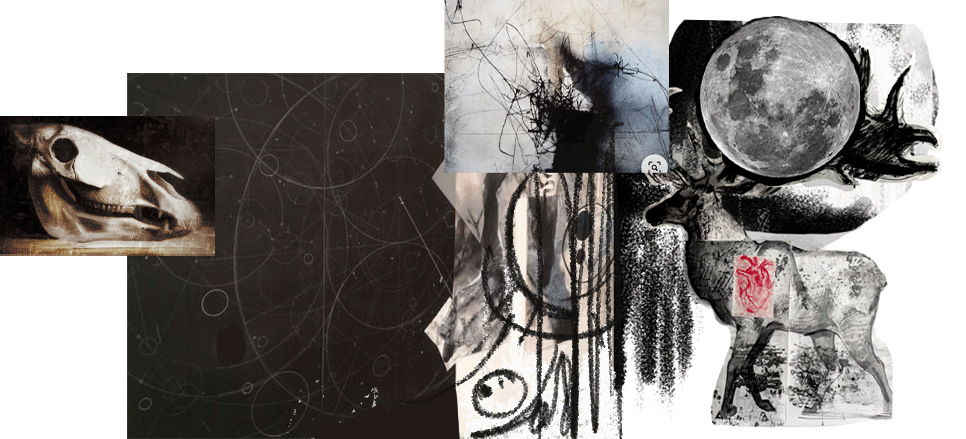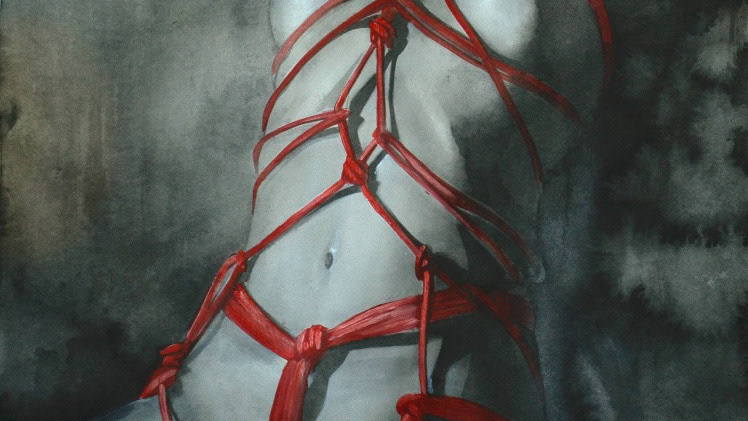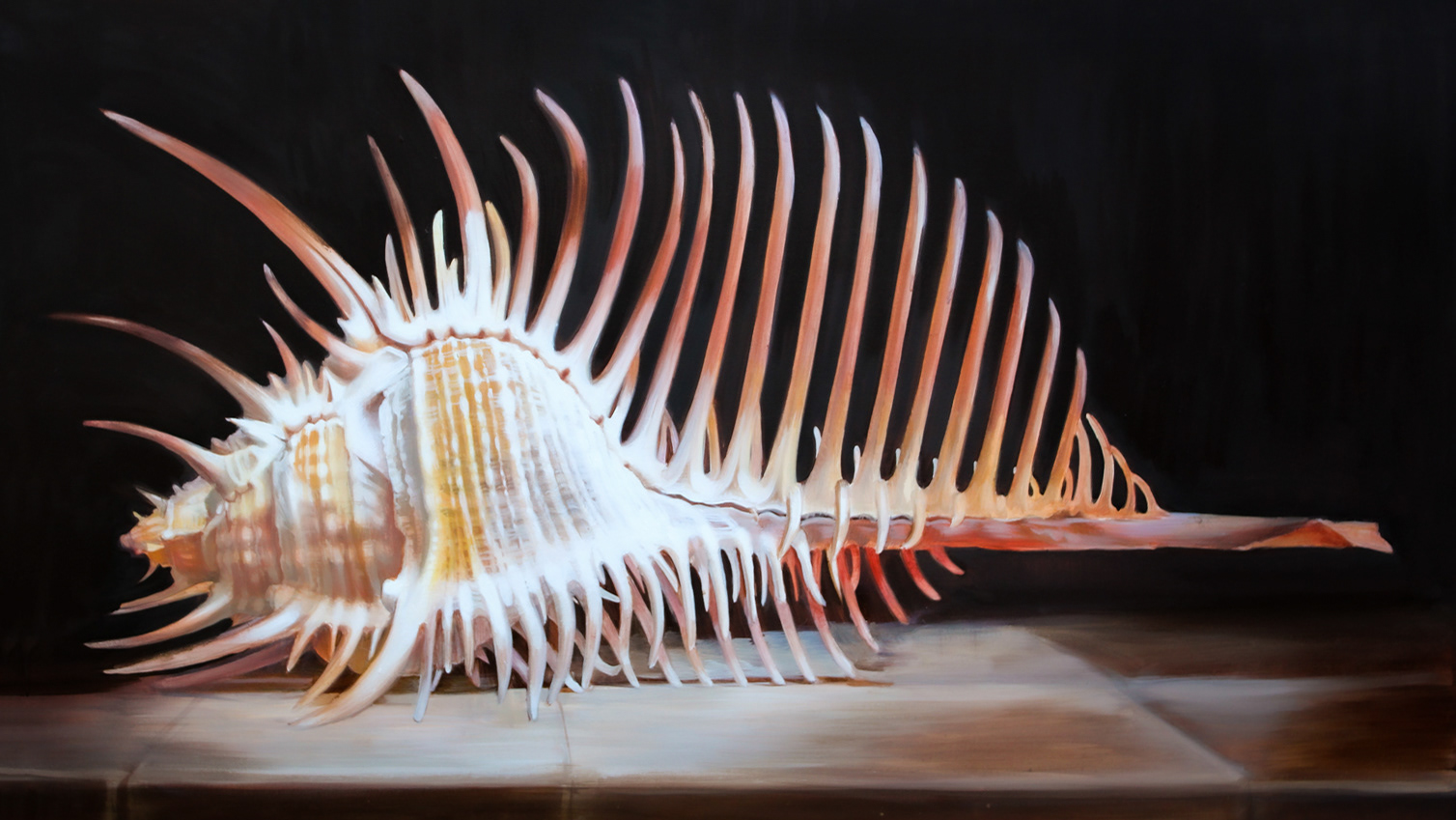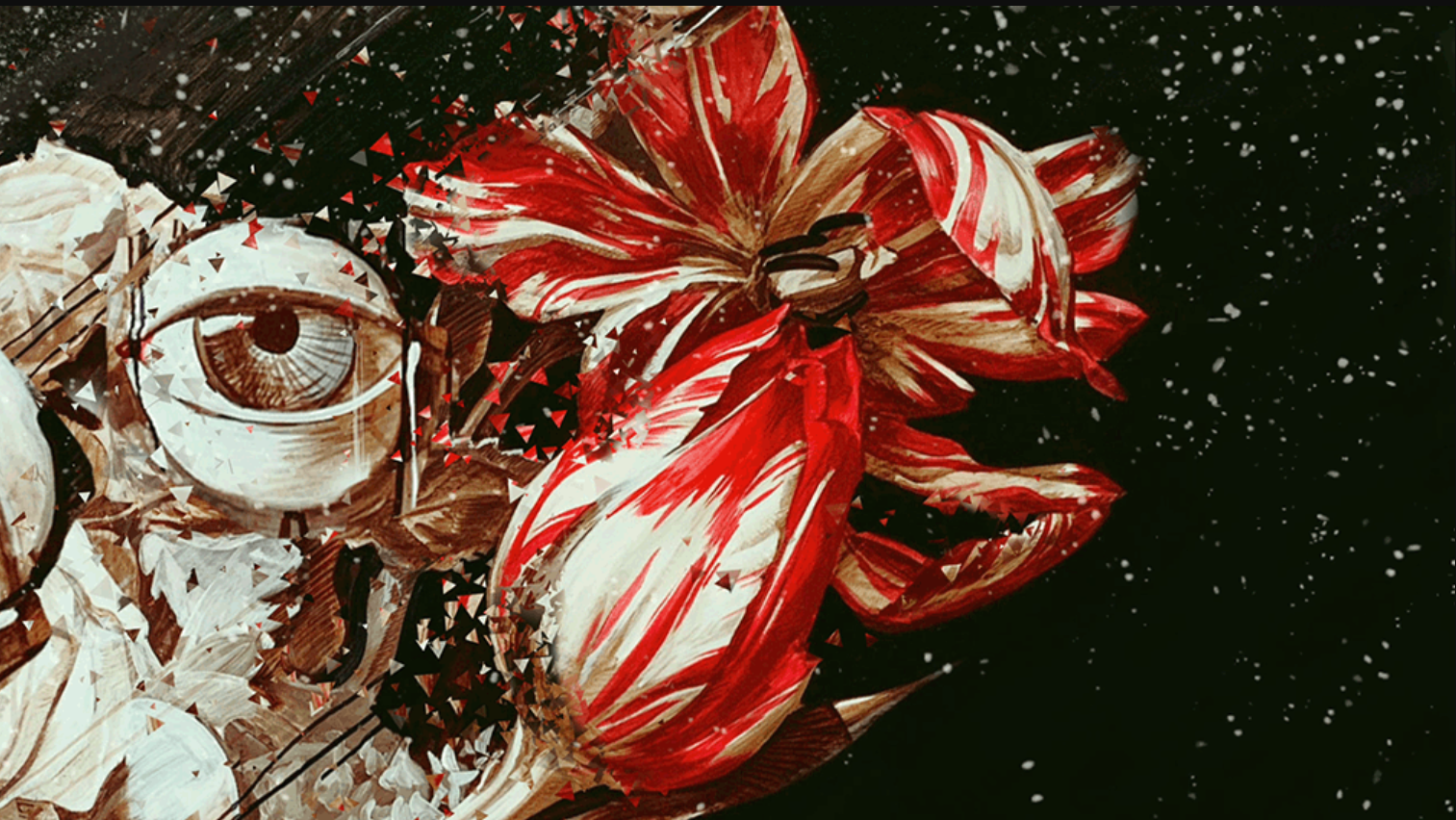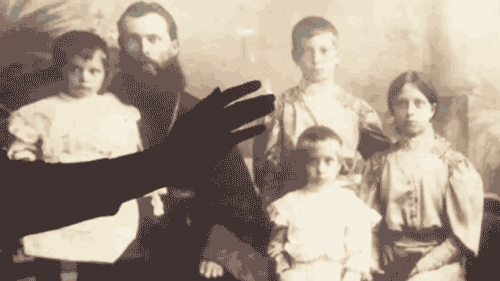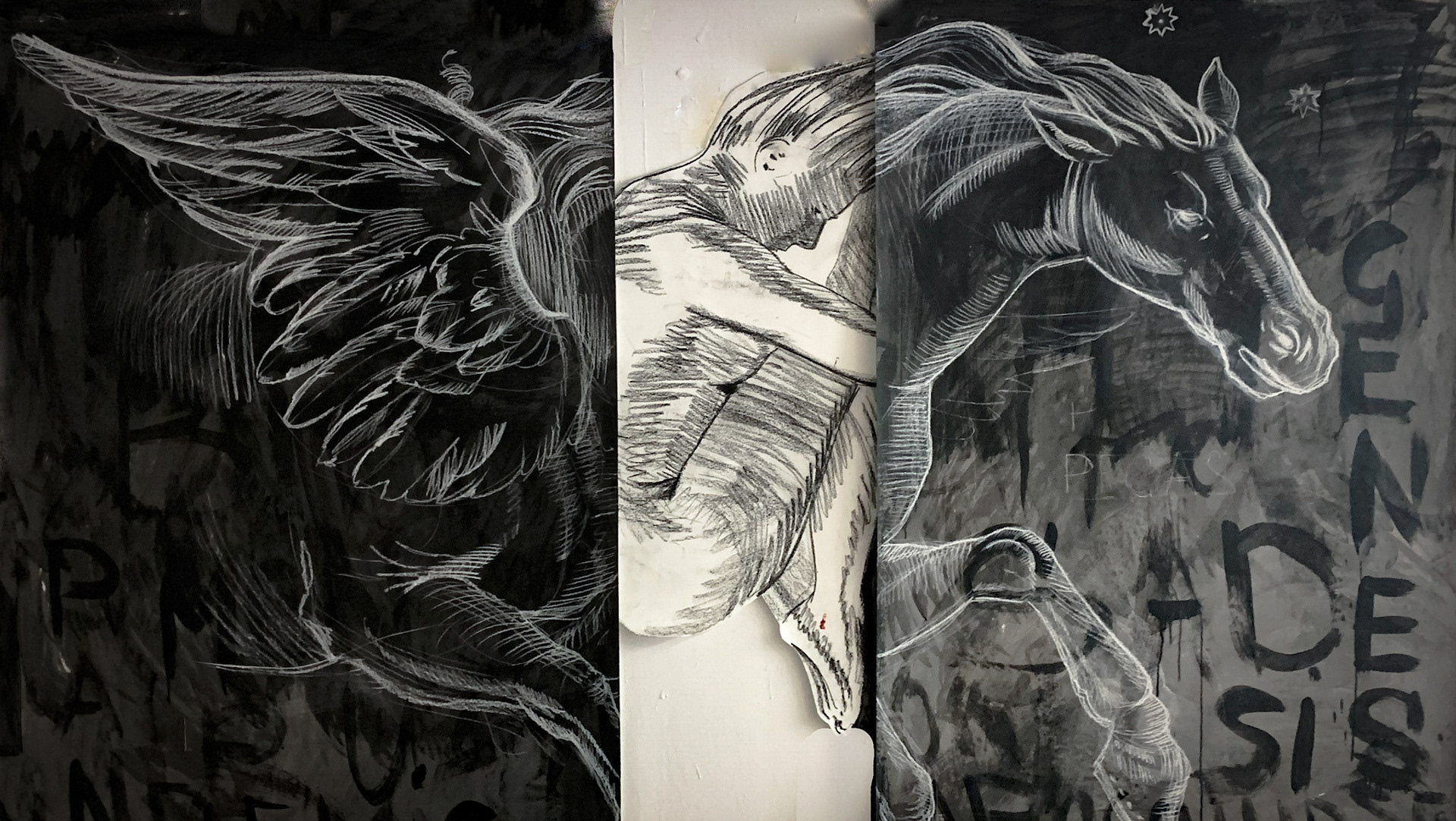The series of artworks began as a memorial to the extinct animals of Wrangel Island,
a remote Russian island in the Arctic Ocean between the Chukchi Sea and East
Siberian Sea is believed to have been the final place on Earth to support life for
woolly mammoths until their extinction around 2000 BC. The exhibition, at the
Darwin Museum of natural history in Moscow celebrated the tradition of
collaboration between artists and scientists. Having been interested in palaeontology
since childhood, I was curious about these ancient animals so it was an amazing
experience to work with the science museum.
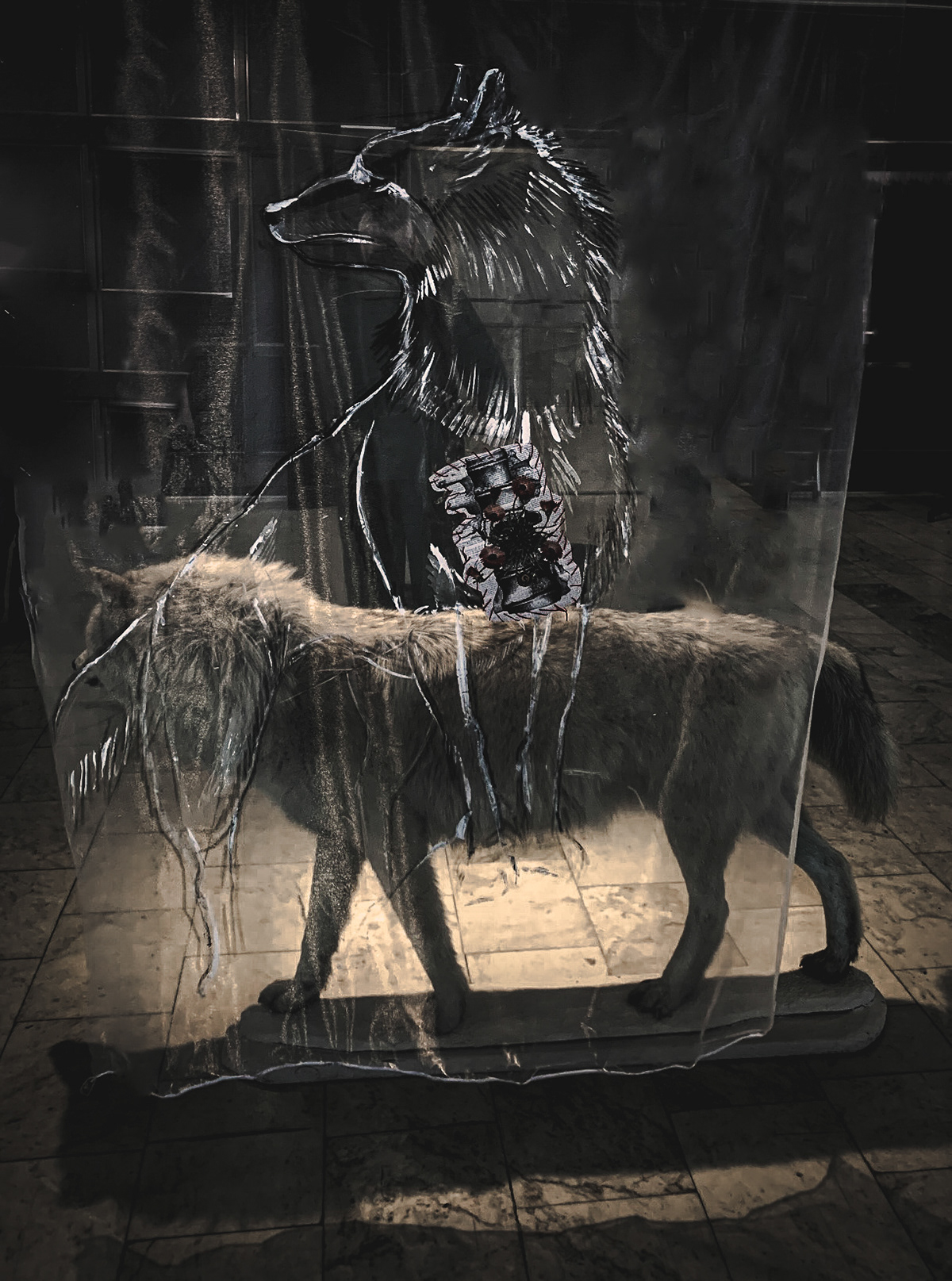
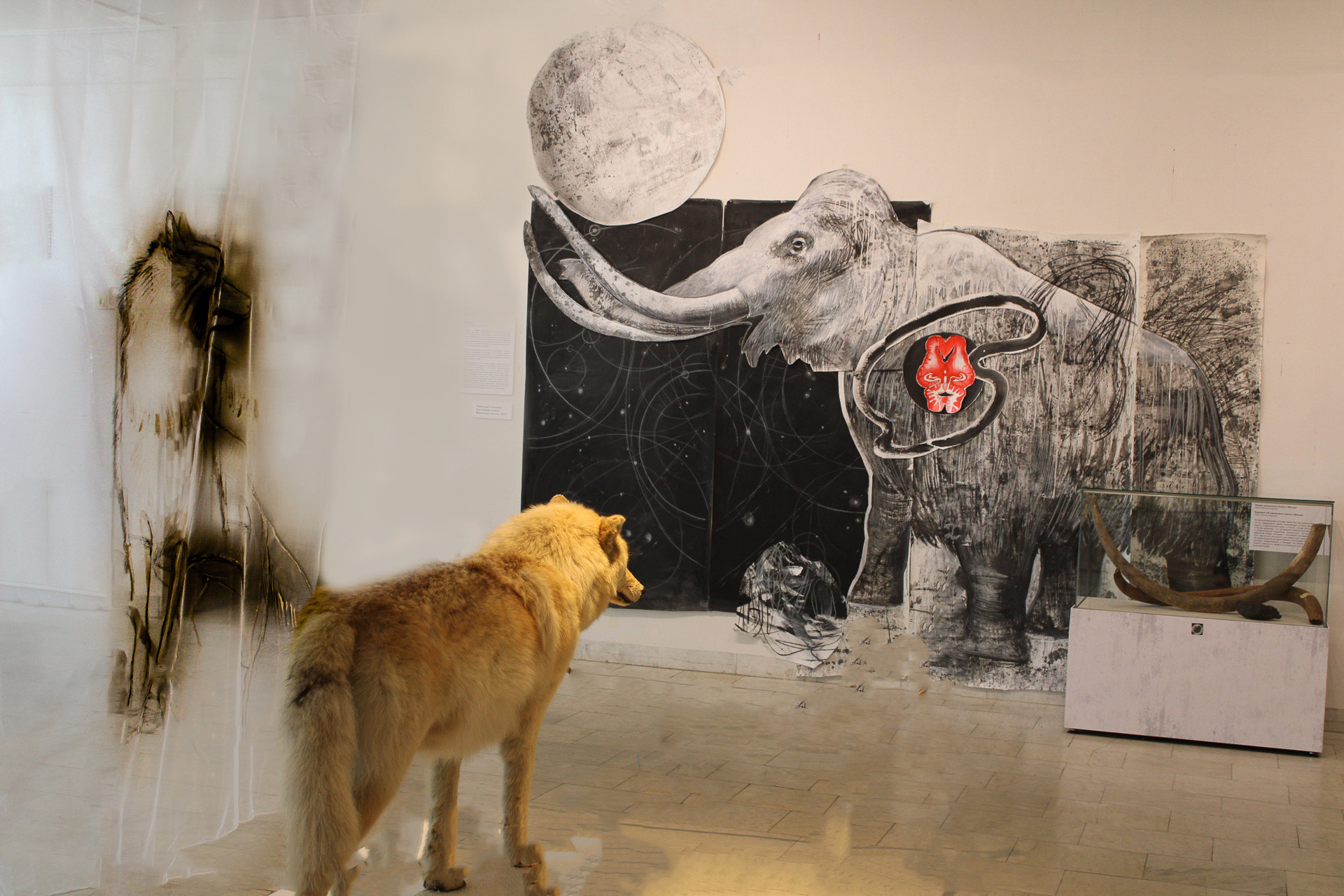
Another fascinating animal that once lived there is the megaceros, an extinct type
of deer which lived throughout Eurasia from the early Pleistocene to the beginning of
the Holocene, and were important herbivores of the Ice Age. The largest species,
megaceros giganteus, sometimes known as the "Irish elk" or "Giant elk" was
around four metres tall.
I used collage and monotype to emphasise that the megaceros had already gone
extinct. Now we can only identify them by small pieces of bones. I assembled my
artwork from pieces of paper to make a life-sized megaceros - about 4 meters tall.
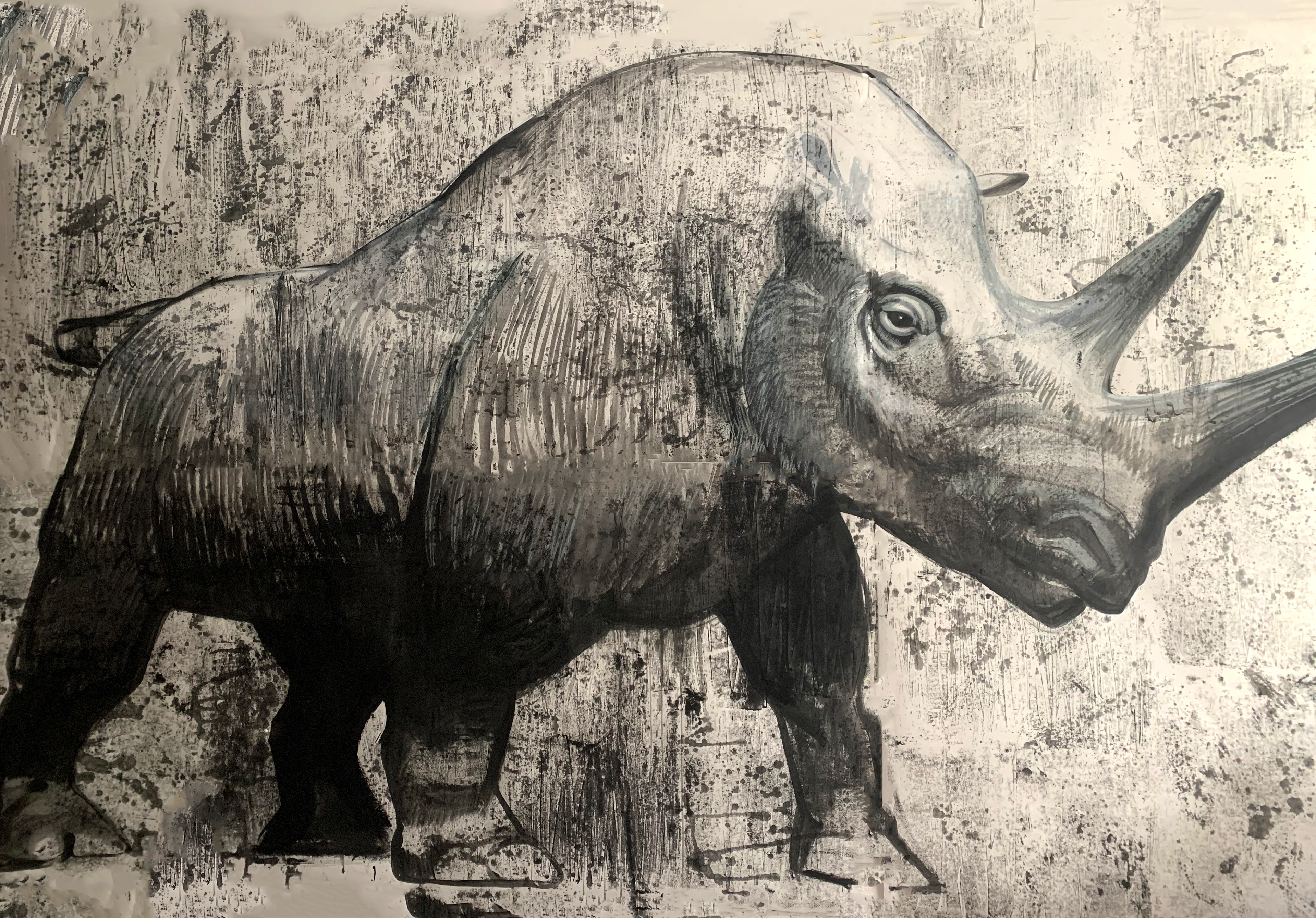
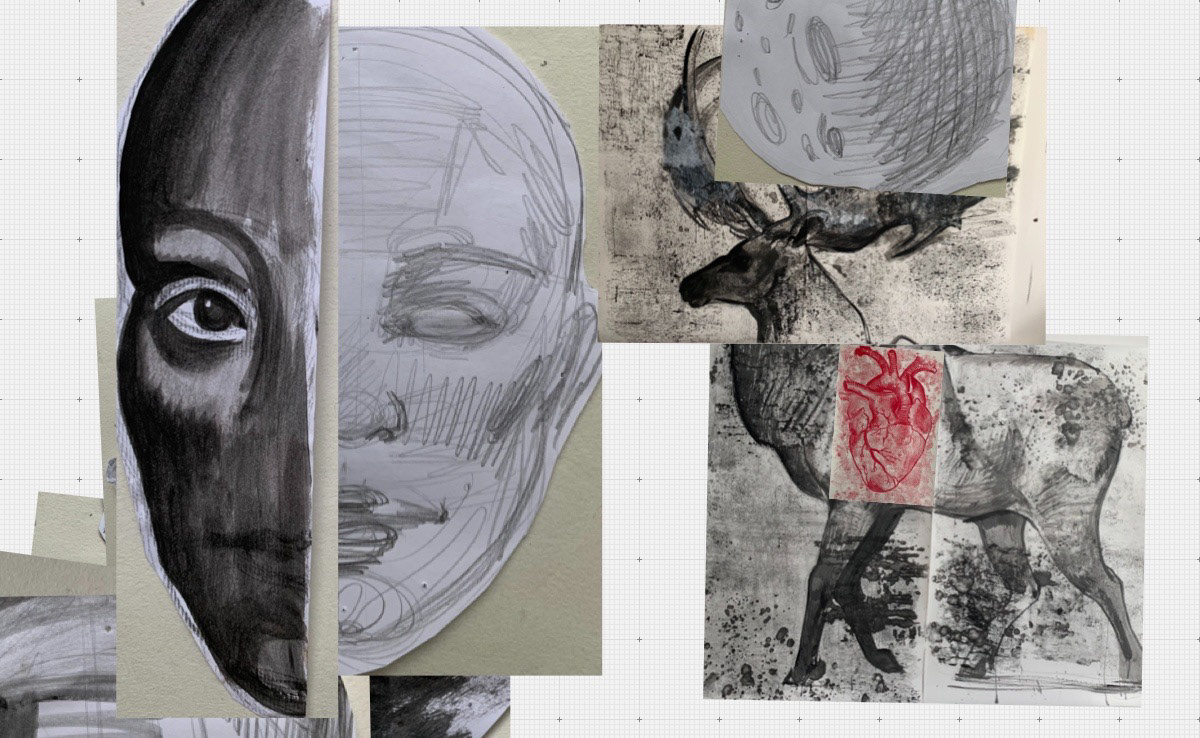
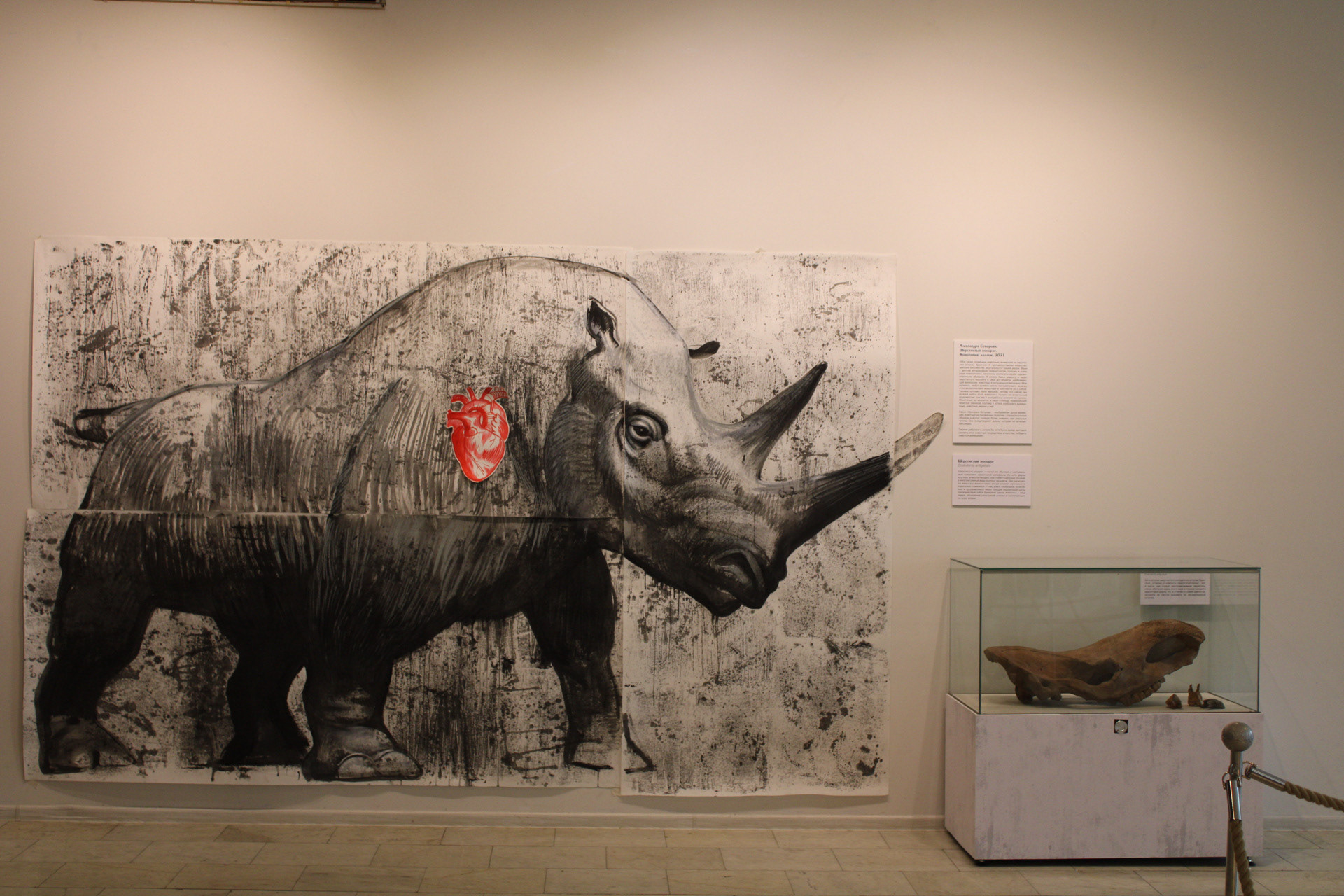
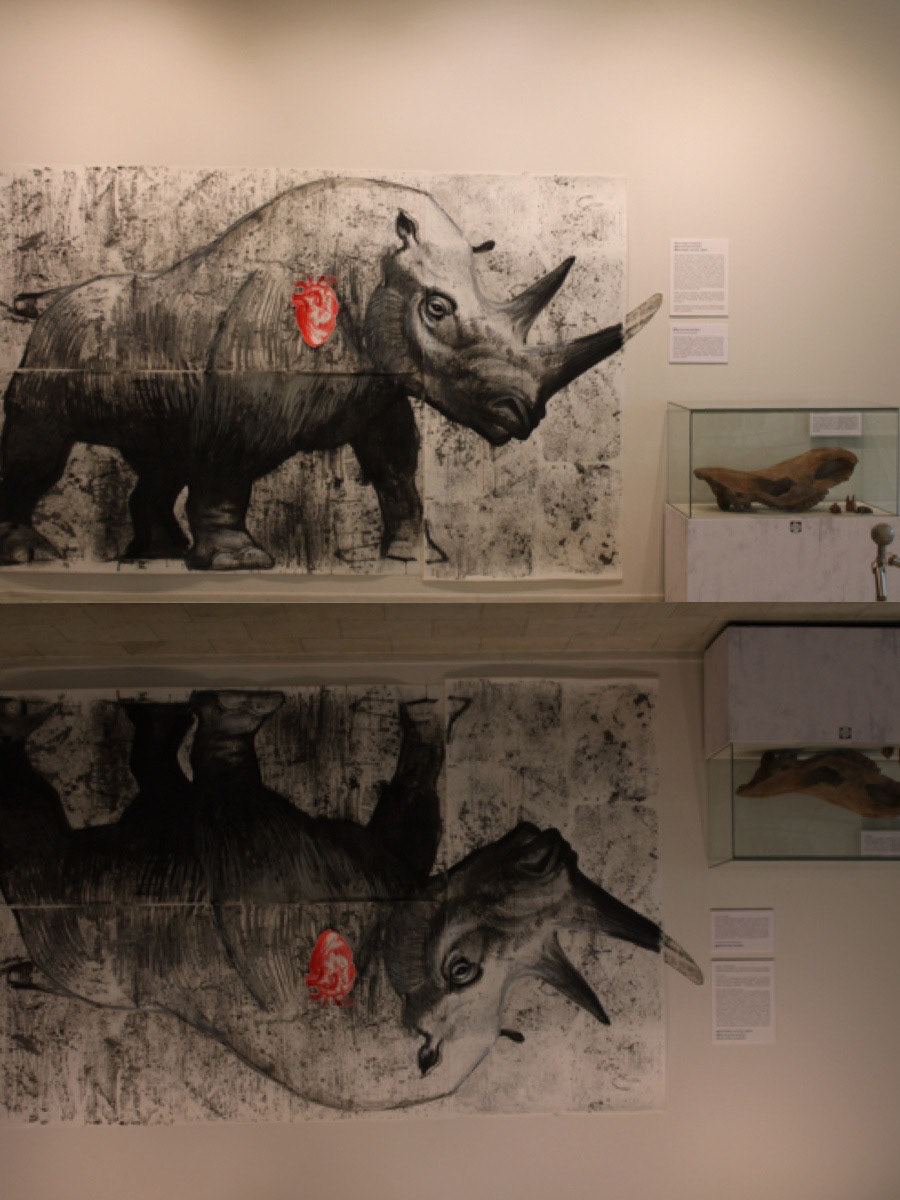
I used collage and monotype to emphasise that the megaceros had already gone
extinct. Now we can only identify them by small pieces of bones. I assembled my
artwork from pieces of paper to make a life-sized megaceros - about 4 meters tall

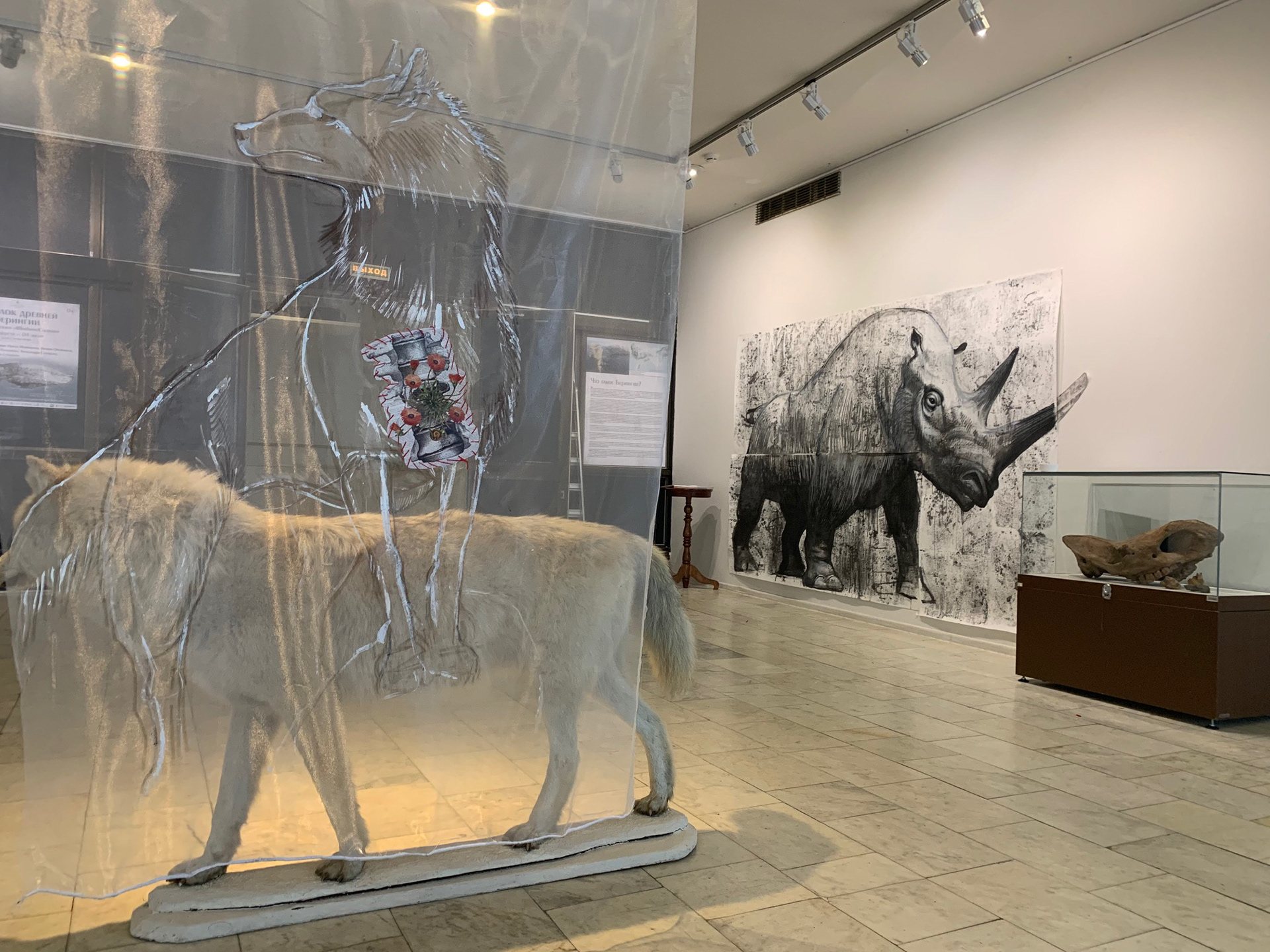
A smoke machine was used to create the ambience of the North Pole. The extinct
animals were drawn on transparent curtains and positioned in the mist. I drew a map
of the constellations, as they were imagined in the Baroque era..

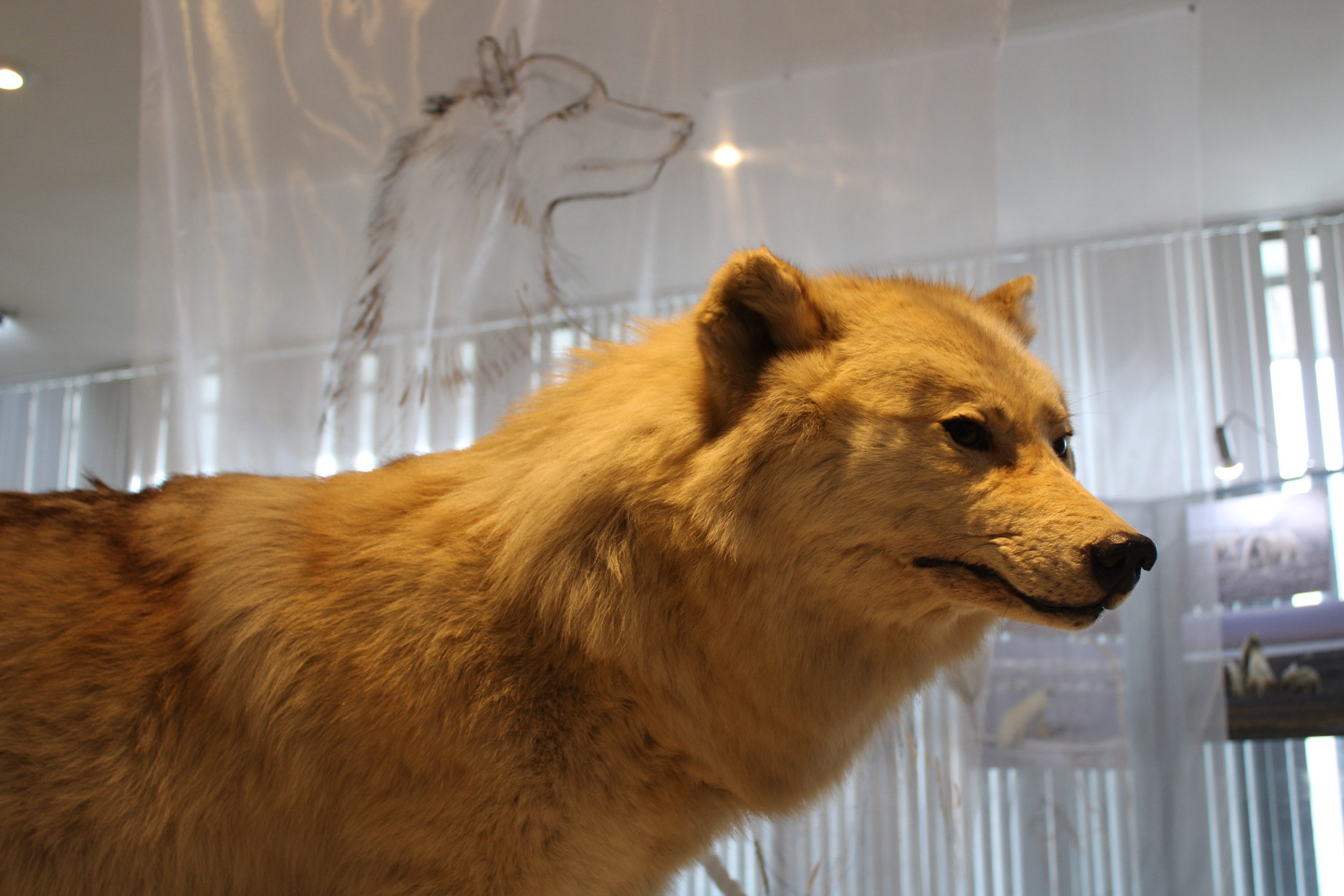

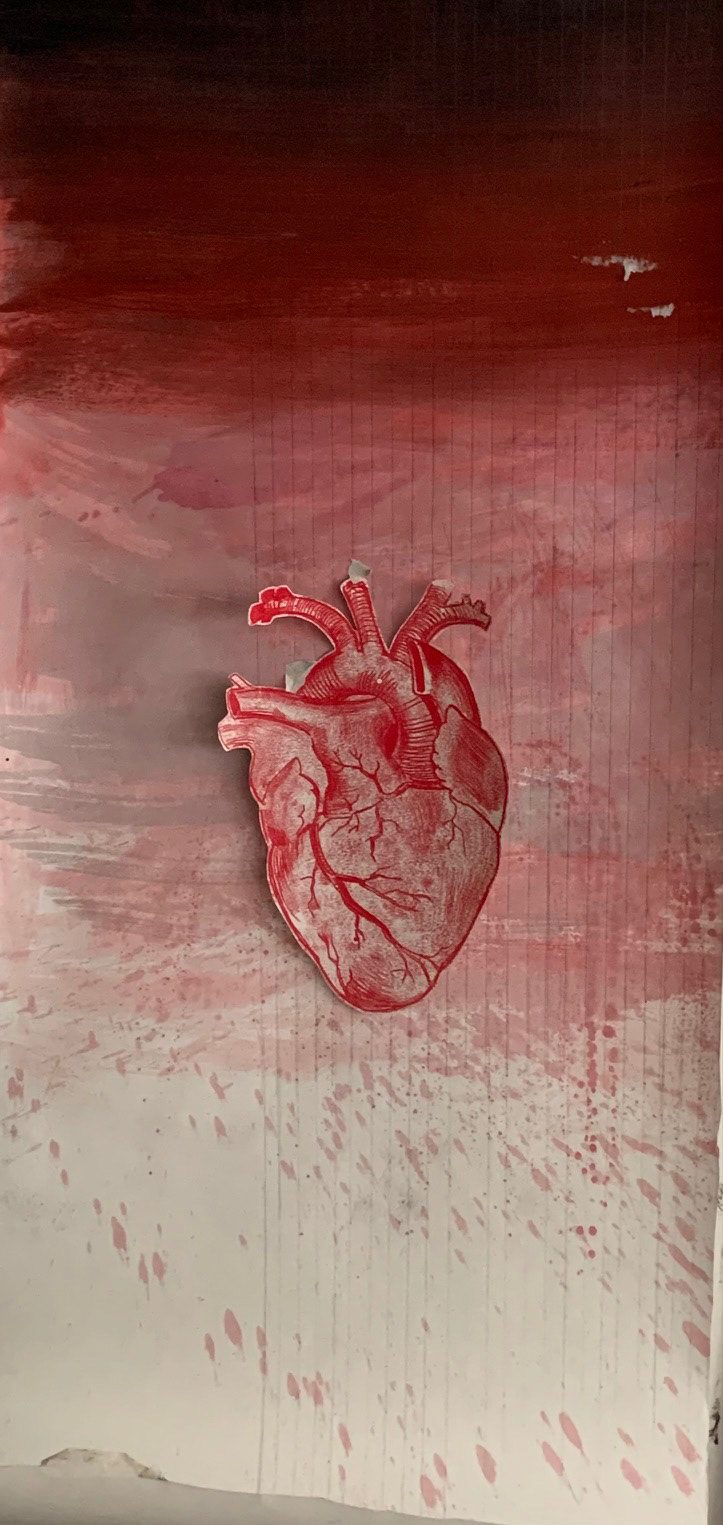
It was suggested to me to create the ambience and image of Baroque theatre using
traditional tools, such as a curtain, paintings, and drawings. The exhibition
“Disappearing World” at the Vmeste Gallery of Contemporary Art in Moscow was
only open during the night. The aim was to create an immersive experience, which
would help visitors connect with their inner feelings and change the way we exhibit
art or visit art galleries and art. Upon arrival, every visitor was given a pocket torch,
which was essential for viewing the artwork by torchlight. The effort needed to view
the works in the dark artspace increased their value.
